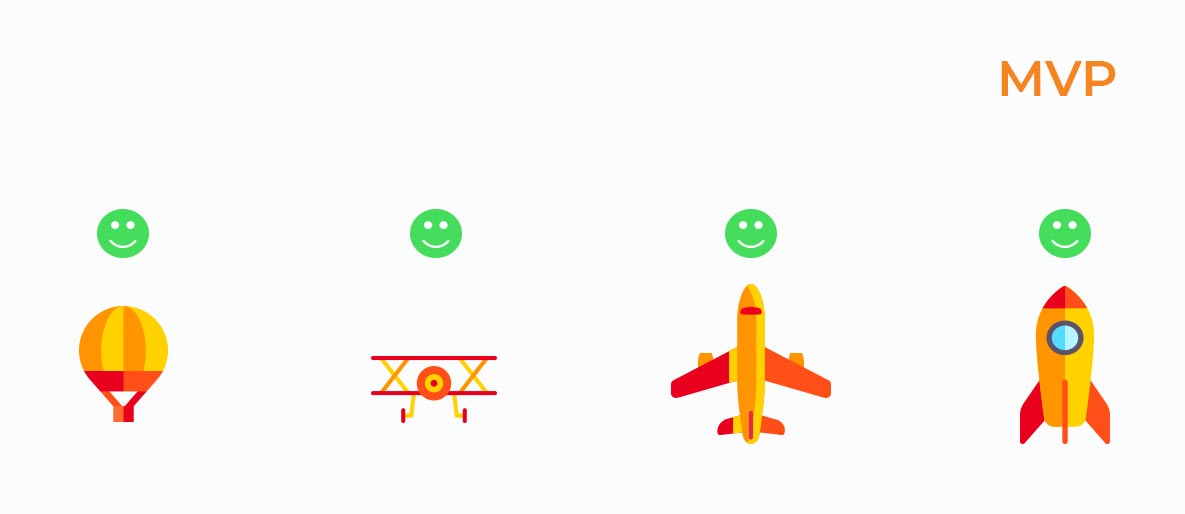In this pandemic period, every business decision is harder than before. Especially if your decision involves people and money. There is a thin line between what seems good and a bad decision. It’s the same with starting now a start-up or building a minimum viable product (MVP). The consumers’ needs significantly changed in the last 5 months, not only their personal needs but also their perspective on what’s important and what’s not.
Anyhow coming up in 2020 with a novel product it’s much harder than before when Airbnb, Facebook, Netflix, or Yahoo! became innovators with their services/ideas. Of course, this should not kill the creativity of thinking big, but in the era of online services’ explosion when almost every inch of digital needs are covered, you need to think twice before initiating an MVP. You need to check if your product is needed on the market, if your app will cover real needs for the users, if the business idea is viable on the marketplace, if you offer something else than your competitors.
Certain steps can help you double-checking where you stand on the market. Even if you can’t perform market research for any reason, you can still do a few key actions while building your product.
Do the MoSCoW analysis
This prioritization strategy is a good way to make sure that you are on the right track with your idea vs implementation, especially if you are not the only stakeholder in this adventure. Don’t forget that an MVP does not mean a fully elaborated/implemented project. You need to stay realistic with your ideas and your budget. Having great features on the backlog does not mean that without those the product wouldn’t survive after launching it. The MVP is just the first guarantee that your product will turn into something bigger.

Photo by Fabian Blank on Unsplash
You need to list all the functionalities and features which are considered critical, without the “must have” items your product wouldn’t run, and your end users wouldn’t get the service/s you want to offer. These are the features for which you and your stakeholders need to make sure that there is a financial assurance for implementation otherwise your expected success will turn into a failure.
“Should have” items are the ones which would be nice to have for the initial launch but due to time constraints won’t happen. Still keep it at the top of your TODO list to make sure that these are the ones to be picked up when time, availability, and budget permit this.
“Could have” are those functionalities that would improve the user experience but can be left out from the MVP launched. Consider these items as future improvements and investments. “Won’t have” scope items are the less relevant and stressful items for your product. You can handle these as some results of a nice brainstorming and schedule their implementation somewhere in the long term when your product grows to a level where regular improvements will be part of the maintenance strategy.
Work in agile methodology & Scrum framework
Since it’s very hard to come up with an accurate product requirements description right from the beginning, it’s recommended to use agile methodology and work in Scrum framework. This is the easiest way to welcome changes. The daily stand up meetings will help you to constantly discuss and elaborate on the goal of your project. At the moment when you start developing your digital product, the technical team and the daily discussions will bring you to another level of thinking about the end result. Having visuals or design mockups in place does not mean that you will end up with that product. We have examples when our customers changed their minds 180° during the development and instead of having a helicopter at the end of the development life cycle, they ended up with a rocket…budget wise too. Maybe you should leave this up to Elon Musk and the SpaceX team…

Photo source here.
Budgetize
Cost-effectiveness can be cruel. Numbers can kill you if you don’t have an accurate budget in place. Developing an MVP should go based on time & material (you pay how much you consumed) approach to have flexibility, without any stressful limitation on developers to fit something into a certain number of hours. This can kill the creativity on development’s end BUT (as there is always a but), you need to stay realistic to your financial possibilities. Do not forget that your product needs to satisfy the early users with sufficient features, not with all the features possible.
You can continue funding your MVP when you have the first round of feedback from your initial users. Don’t throw money out of the window, you might be sorry later on.
See Myth #6 where it’s nicely explained why the below formula will never work:
# Good + fast ≠ cheap
# Fast + cheap ≠ good
# Good + cheap ≠ fast
Launch your MVP asap
Before launching your product, test the s**t out of it. Involve your family and friends, they can be the best target group ever for helping you discover the 1st customer reaction to your product. Your close circle of people can be a good target especially that they will speak about your product, they will give you realistic feedback about the pros and cons.
QA and QC must be part of your budget, do not underestimate the importance of a testing team. Make sure that quality assurance is part of your costs regardless, how hard this is. It’s better to have fewer features working perfectly than have more features but with bugs.
If you struggled yourself through the multiple testing rounds and your MVP still stands on its feet, do not hesitate to launch it. Don’t wait till the rocket will be ready, the helicopter still can take your users up in the sky. That’s a hard decision to make but the sooner you make it the better will be.
Encouraging our customers to launch their products is part of our role. In our daily work we are executors but on a higher level, we give feedback on the business models and delivery strategy.
If you are not entirely ready/sure to launch your MVP, we recommend Eric Ries’ book, “The Lean Startup”, this book is a great encouragement of not being afraid of failing, succeeding or landing between the two.
Cover image source here.
Related Articles
What is TEDx? Due to its popularity in recent years, we think everybody knows what a TED Talk is and what it is about. To do a short recap, TED…
Planting trees for a better tomorrow For many decades, tree removal has been identified as one of the primary causes of nature loss and environmental harm. Over 20 million…
Interview with our Head of Design, László KÁLMÁN, about the latest design trends, perspectives, popular colors, and fonts. We were curious about what will be trendy this year in terms…


